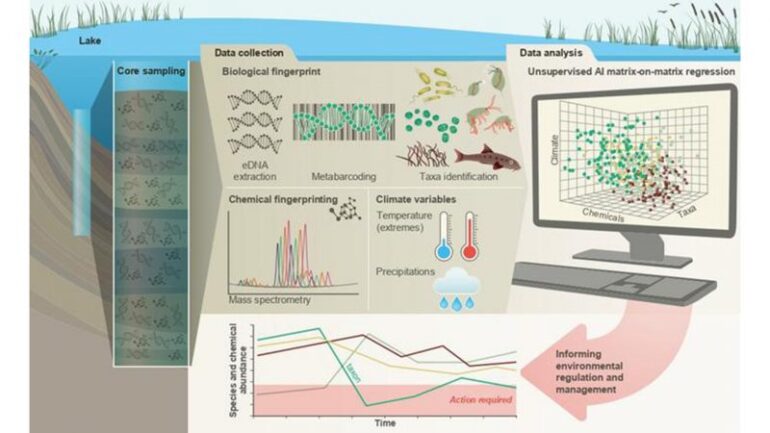TL;DR:
- AI analysis reveals a ‘biodiversity time machine’ providing a century-long perspective on pollution, extreme weather, and rising temperatures.
- Sediment from a Danish lake offers a unique historical dataset for AI-driven environmental analysis.
- Insecticides, fungicides, and increased minimum temperatures have significantly damaged biodiversity.
- Recent improvements in water quality offer a glimmer of hope but may not fully restore lost species.
- The study emphasizes the potential irreversibility of biodiversity loss due to pollution and warming.
- Expanding AI analysis to other lakes aims to generalize findings on climate change and pollution’s impact.
Main AI News:
In a remarkable feat of scientific innovation, AI analysis has given birth to a ‘biodiversity time machine,’ shedding light on a century’s worth of pollution levels, extreme weather events, and rising temperatures. This groundbreaking approach is poised to assist regulators in safeguarding existing biodiversity or potentially enhancing it.
The study, titled ‘100 years of anthropogenic impact causes changes in freshwater functional biodiversity,’ recently published in the prestigious journal eLife, unveils a transformative way to decipher the impacts of climate change on our environment.
Unraveling the Biodiversity Time Machine
A collaborative effort between the University of Birmingham and Goethe University in Frankfurt has yielded astonishing results. Researchers turned their attention to a freshwater lake in Denmark, armed with sediment samples from its depths. This lake, with its well-documented historical shifts in water quality, served as the perfect natural laboratory for their endeavor.
Employing AI analysis, these scientists unearthed a continuous record of biological and environmental signals, offering insights from the early days of the Industrial Revolution to the present. By harnessing environmental DNA—a genetic treasure trove left behind by plants, animals, and bacteria—they constructed a comprehensive profile of the entire freshwater ecosystem.
Unmasking the Culprits
The ‘biodiversity time machine’ revealed disturbing truths about the main culprits behind the historic loss of species in the lake. Insecticides and fungicides, coupled with a 1.2-1.5-degree increase in minimum temperature, emerged as the leading perpetrators of biodiversity damage.
Notably, the AI analysis indicated a glimmer of hope in the past two decades. As agricultural land use in the surrounding area decreased, water quality improved, offering a lifeline to beleaguered biodiversity. However, while overall biodiversity showed signs of recovery, it failed to fully mirror the past, potentially hampering the restoration of specific ecosystem services.
An Irreversible Conundrum
Niamh Eastwood, lead author and PhD student at the University of Birmingham, issued a sobering warning, “The biodiversity loss caused by this pollution and the warming water temperature is potentially irreversible. The species found in the lake 100 years ago that have been lost will not all be able to return. This research shows that if we fail to protect biodiversity, much of it could be lost forever.”
The Road Ahead
The journey doesn’t end here. Researchers plan to expand their AI analysis beyond a single lake, venturing into lakes across England and Wales. This ambitious undertaking aims to uncover the universality of the observed patterns, providing valuable insights into the broader implications of pollution and climate change on lake biodiversity.
Dr. Jiarui Zhou, co-lead author and Assistant Professor in Environmental Bioinformatics at the University of Birmingham, underscored the potential of AI-based approaches, stating, “We have demonstrated the value of AI-based approaches for understanding historical drivers of biodiversity loss. As new data becomes available, more sophisticated AI models can be used to further improve our predictions of the causes of biodiversity loss.“
Conclusion:
This pioneering ‘biodiversity time machine’ demonstrates the power of AI in understanding historic environmental changes. For the market, it underscores the growing importance of AI-driven solutions in ecological research, environmental protection, and policy-making, offering new opportunities for businesses specializing in AI-driven environmental analytics and conservation efforts.

